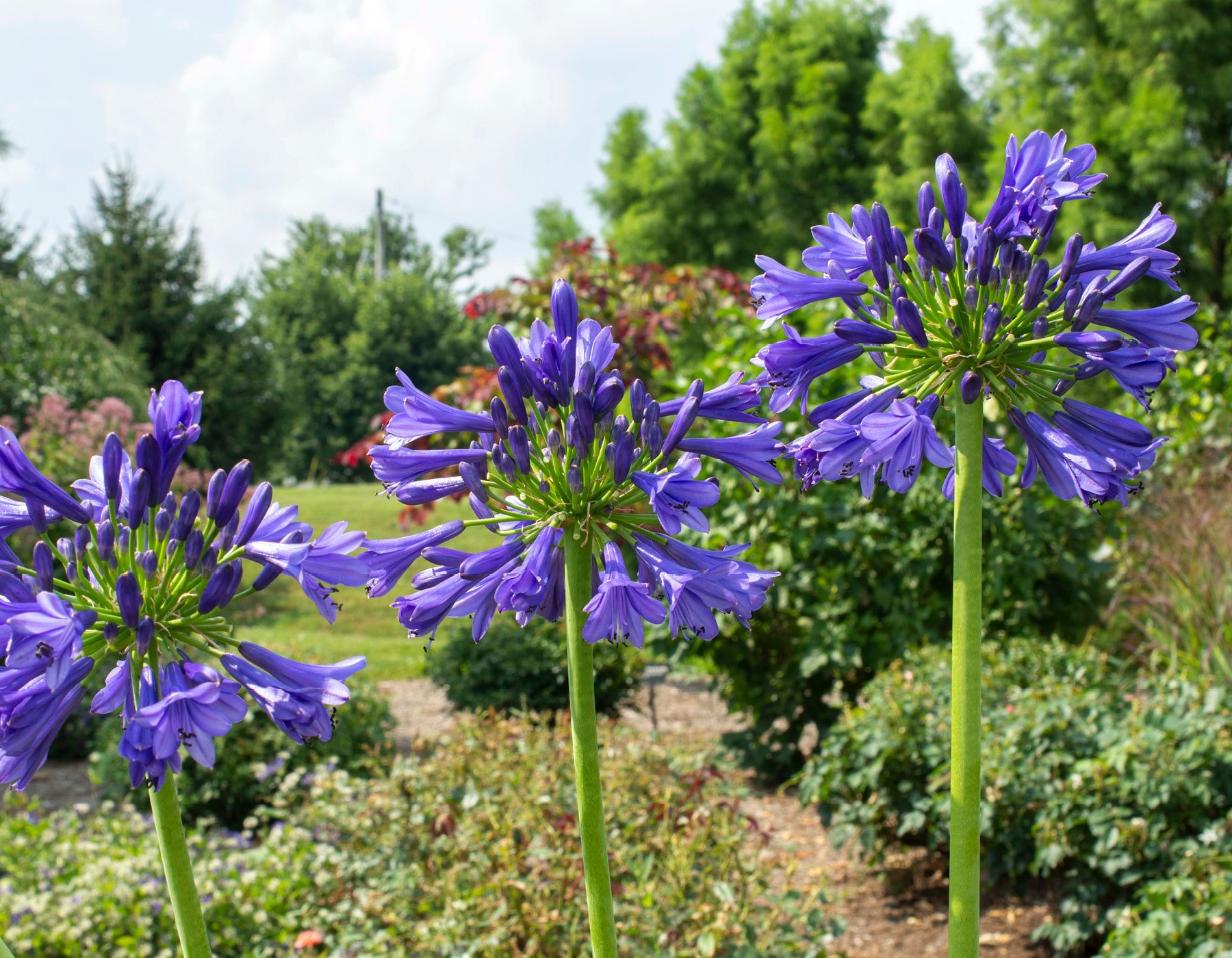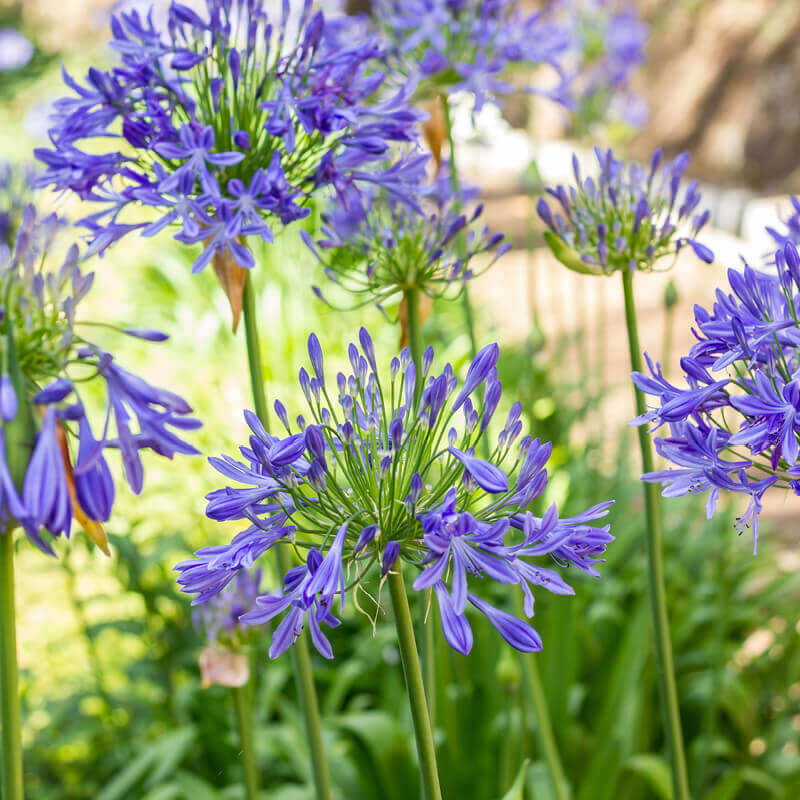Agapanthus Proliferation: Tips for Expanding Your Plant Collection
Unleashing the Secret to Effective Agapanthus Growing: Idea for a Flourishing Garden
In the realm of horticulture, growing agapanthus efficiently requires a critical strategy that includes numerous facets of plant treatment. By recognizing the nuances of agapanthus farming, one can create a setting where these plants grow and flower perfectly.
Growing Agapanthus: Best Practices
When planting Agapanthus, appropriate dirt prep work is necessary for making certain effective development and development of these attractive blossoms. Agapanthus, generally called Lily of the Nile or African lily, thrives in well-draining soil with a somewhat acidic to neutral pH degree - Agapanthus. Before planting, it is vital to modify heavy clay soils with organic matter such as garden compost or peat moss to enhance drainage and supply crucial nutrients for the plants
To plant Agapanthus, select an area that receives full sunlight to partial color, as this will certainly advertise healthy and balanced development and bountiful flowering. Dig a hole twice the size of the plant's origin ball and position the Agapanthus at the same depth it was formerly growing. Delicately backfill the opening with dirt, pushing down securely to eliminate any kind of air pockets around the roots.
Water the recently planted Agapanthus extensively and remain to keep the dirt equally wet, particularly throughout the plant's active growing season. Agapanthus. Using a well balanced plant food once a month can better support the plant's development and blooming. By following these finest techniques for growing Agapanthus, you can develop a magnificent display screen of these captivating blossoms in your yard
Ideal Soil Issues for Agapanthus
For ideal growth and blooming success of Agapanthus plants, making certain the dirt conditions are excellent is critical. Agapanthus thrives in well-draining soil with a slightly acidic to neutral pH level ranging from 6.0 to 7.0. This sort of dirt permits appropriate water drain, preventing waterlogging which can lead to root rot. To boost dirt drain, think about adding natural matter such as compost or peat moss when preparing the growing site. Moreover, Agapanthus likes dirt that is abundant in nutrients, so including a balanced plant food during the growing season can advertise healthy and balanced growth and lively blooms.

Watering and Fertilizing Tips
To make certain healthy growth and lively flowers, appropriate watering and fertilizing techniques are necessary for successful Agapanthus cultivation. Agapanthus plants profit from routine watering, especially throughout the expanding period.
When it comes to feeding Agapanthus, a well balanced plant food with equal components nitrogen, phosphorus, and potassium can be applied in the springtime to promote healthy and balanced development and flowering. Slow-release plant foods are ideal for providing nutrients slowly over an extensive period. Prevent over-fertilizing, as this can lead to too much vegetation official website growth at the expense of blossoms.
Furthermore, integrating raw material like garden compost right into the soil can improve nutrient levels and boost soil structure, aiding in the total health and wellness of the Agapanthus plants. By adhering to these watering and fertilizing suggestions, gardeners can ensure their Agapanthus plants flourish and create spectacular displays of flowers.
Pruning and Deadheading Methods
Appropriate pruning and deadheading strategies play a critical duty in keeping the health and aesthetic appeals of Agapanthus plants, enhancing the essential techniques of watering and fertilizing for effective growing. Trimming Agapanthus entails removing invested blossom heads, dead or yellowing fallen leaves, and total shaping of see the plant to promote better growth. Deadheading, the process of getting rid of faded flowers, not only boosts the plant's look but additionally motivates additional growing.
When deadheading Agapanthus, it is advisable to snip off the flower stem at the base making use of sharp, tidy shears. This procedure redirects the plant's power from seed production back right into root and foliage growth, promoting a much healthier and extra robust plant. Regular deadheading can expand the growing period of Agapanthus and prevent self-seeding, which can cause overcrowding.
In regards to trimming, Agapanthus typically take advantage of a light trim after blossoming to clean up the plant and urge fresh development. Cutting down the invested flower stems and getting rid of any type of broken or dead foliage helps maintain the plant's vitality and general appearance. Nevertheless, it is necessary to prevent reducing right into the crown of the plant, as this can weaken its health.

Protecting Agapanthus From Vermins and Diseases
Carrying out effective pest and condition monitoring strategies is essential to safeguarding the health and wellness and vigor of Agapanthus plants in cultivation. Agapanthus are usually hardy plants, yet they can still fall target to numerous bugs and conditions if not correctly looked after. One common pest that influences Agapanthus is the Agapanthus borer, a caterpillar that passages right into the plant, triggering damage to the blossoms and leaves. To avoid infestations, normal assessment of the plants is essential. If borers are discovered, they can be manually gotten rid of, or insecticidal soap can be made use of as a control procedure.
Along with insects, Agapanthus are prone to conditions such as root rot and fungal fallen leave places. These concerns can frequently be stopped by guaranteeing appropriate water drainage and preventing overwatering. Affected parts of the plant must be without delay removed to avoid additional spread if indications of condition appear. Fungicides might additionally be made use of as a treatment step, complying with the maker's guidelines carefully. By staying alert and resolving parasite and disease issues quickly, gardeners can assist their Agapanthus flourish and grow.

Verdict
In verdict, successful cultivation of agapanthus needs correct planting strategies, excellent dirt conditions, adequate watering and fertilizing, normal pruning and deadheading, and protection from illness and pests. By adhering to these tips and tricks, garden enthusiasts can make sure a growing garden loaded with lovely agapanthus blossoms. Agapanthus. Remember to keep regular care find more information and interest to information to promote the health and longevity of these magnificent plants
When planting Agapanthus, correct dirt prep work is important for ensuring effective development and development of these beautiful blossoms.Water the freshly planted Agapanthus extensively and continue to keep the soil uniformly damp, specifically throughout the plant's energetic growing season.For optimum development and growing success of Agapanthus plants, guaranteeing the soil problems are ideal is important. When growing or hair transplanting Agapanthus, guarantee the dirt is well-prepared to give the necessary structure for the plants to establish themselves effectively. One usual bug that impacts Agapanthus is the Agapanthus borer, a caterpillar that tunnels into the plant, creating damages to the flowers and fallen leaves.